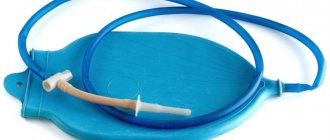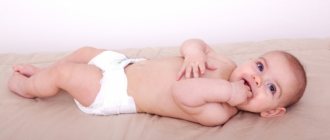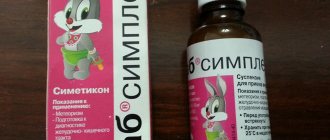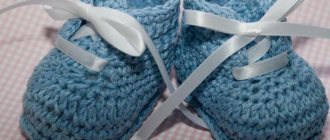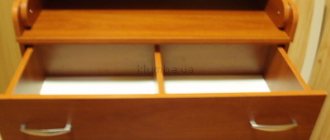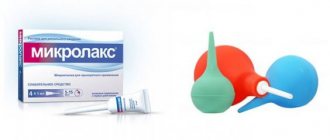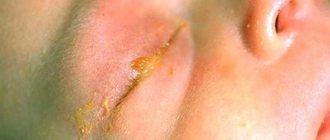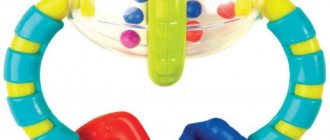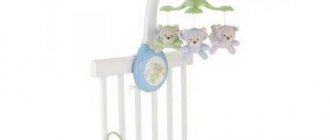Why are they needed?
Modern diapers for newborns are no longer just a piece of cloth for diapering, but attractive, safe products that differ in their properties, taking into account the tasks they can solve.
When planning the purchase of baby care products, you need to take into account that you cannot do without the classic options made of flannel and chintz, but along with them you will need walking, knitted, Velcro and the most irreplaceable ones - disposable ones. Even if parents decide not to wrap the baby, but to use baby onesies, onesies and rompers, they still cannot do without diapers. More often, parents who do not welcome tight wrapping use them as a sheet for the stroller, crib, and table. As a rule, 10 ordinary items made of soft knitwear or flannel is enough for these purposes, but they will have to be washed often, since babies get their clothes dirty very quickly, and strict hygiene is the primary task of parents.
In order not to waste time constantly washing diapers for newborns, you can purchase disposable products. They easily cope with the same tasks as ordinary fabrics, but they do it much better and safer, and also eliminate the hassle of washing. Compared to classic cloth diapers, disposable ones immediately absorb liquid. All that remains is to throw away the used diaper, saving time and effort on maintaining cleanliness.
Features of swaddling products
If you agree that a diaper is the most comfortable garment for a baby, then you will most likely have a question about how to choose the right product and how not to go wrong with the fabric. In the article we will give you a comprehensive answer about which diapers you should give preference to and what they are intended for.
Many mothers have noticed the fact that swaddling is the best choice for babies, so let’s identify the advantages of a baby product:
- easy to wash, comfortable for the child;
- heat-regulating diapers will prevent the baby from overheating or freezing;
- calms the baby, he almost immediately closes his eyes and falls asleep when swaddling;
- speed of dressing;
- helps with feeding, because children often spit up;
- easily replaces a sheet in a crib or on a changing table;
- indispensable when you are walking with a baby;
- The baby sleeps much better in a diaper.
Various materials are used to make diapers.
- Calico. Mothers use a product made from chintz when planning a walk with their baby, both in winter and summer. The diapers are made from 100% cotton.
- Flannel. Swaddles are perfect for winter weather - they protect the baby from the cold, and after bathing they serve as a blanket.
- Knitwear. Knitted products are suitable for an active child, they are elastic, giving him the space for movement that he so needs.
We should also highlight an improved version of the diaper - an envelope. 30 seconds is enough for swaddling. The diaper resembles a cocoon - the baby's legs are free, and the arms are swaddled and secured with Velcro. Convenient, and from birth they will become indispensable.
They are also disposable and reusable.
- Disposable. For travel, diapers of this type are what you need. They are moisture-wicking and multi-layered. The convenience lies in the fact that there is no need to wash them, they are simply thrown away and replaced.
Reusable. There are two types: absorbent and waterproof. Absorbent ones quickly absorb liquid, while waterproof ones, on the contrary, do not absorb, holding the liquid on the surface - they successfully replace oilcloth. Such options replace not one product, but two at once: a diaper and an oilcloth.
Characteristics
Hygienic procedures turn into pleasure for mother and baby when treating the umbilical wound, wiping folds, daily morning toilet or taking an air bath. Babies born in the summer sleep better in a diaper without a diaper, and during feeding, a padded diaper will protect the parents' bed and mother's clothes from milk stains and regurgitation. Whether or not to choose such hygiene products is a parent’s decision, but if comfort, cleanliness and time are important, the choice is obvious.
If we compare the characteristics of reusable and disposable diapers for newborns, we can highlight a number of advantages and some disadvantages. The following factors speak in favor of choosing the former:
- variety of colors;
- possibility of repeated washing;
- use for infants.
If we talk about modern diapers, their distinctive features are as follows:
- no need to wash and iron – time saving;
- the liquid is quickly absorbed and the surface remains dry;
- the material is soft, gentle to the touch, does not cause allergies;
- maintaining a large volume of liquid inside.
Comparing the disadvantages, it should be noted that they cannot be washed, and also that children are not swaddled with them, but only bedding. Reusable ones have much more disadvantages:
- do not protect delicate baby skin from moisture;
- the liquid penetrates through and wets the surface under the diaper;
- needs to be washed, dried and ironed.
Taking into account all of the above, it becomes obvious that each type of product has its own purpose, so both options are useful: flannel - for swaddling, disposable - for hygienic child care.
Useful tips
Young parents are interested in how to properly use children's products. Experts give some simple tips to help you get through this difficult and wonderful period.
- always keep children's things in sterile conditions;
- if you notice your baby's anxiety, change his diaper;
- wash the product with a small amount of powder;
- refuse diapers if your baby is allergic to them;
- if washing the product takes a long time, then you can easily use disposable diapers;
- bright diapers attract the baby’s attention, but they can have a bad effect on the development of his vision, and can also cause allergies due to dyes;
- choose a medium-sized product, and small and large ones are usually bought individually;
- It’s better to stock up on diapers for any time of year;
- in order for the fabric to wash better, it is first washed with soap, and only after that it is sent to the washing machine;
- The baby is usually swaddled until one and a half months, and after that only at night.
Which ones are better?
Choosing quality diapers for newborns takes into account several factors. Such products consist of 3 layers. The bottom one is polyethylene, protecting any surface from liquid leakage. The middle one contains an absorbent filler, thanks to which the liquid is quickly absorbed and does not come out. The third layer, in contact with the baby's skin, is made of soft cellulose, pleasant to the touch. The quality of each layer is an important point that you should pay attention to when purchasing. To avoid mistakes, it is better to buy products from well-known manufacturers of baby care products.
The diapers will protect the crib, stroller and any surface on which you place your baby from contamination. High-quality cellulose evenly absorbs and distributes liquid, leaving baby's sensitive skin dry. The bottom layer does not slip, which means it will not wrinkle in the crib or on the table and will provide protection and comfort.
Types of diapers and their variety
The stores offer a wide variety of colors, sizes and fabrics for diapers. Which one is better to choose?
- Thin cotton fabric will become an integral part of a child’s daily wardrobe, especially in the hot season;
- For the cold season, products made from flannel or flannel are well suited;
- Knitted, with a zipper - more like an envelope for a baby, which has a special section for the baby’s legs. You can put a baby in it very quickly, it is very soft and fits well to the baby’s body. Considering that knitwear tends to stretch, when swaddling a baby, especially at first, you will need some skill on the part of the mother;
- Velcro diapers are more reminiscent of a cocoon shape. When sewing it, fabrics such as jersey, flannel, fleece or cotton are used. When choosing a diaper size, you must take into account the baby's height;
Features of our products:
- the cellulose of the absorbent layer is bleached without chlorine and does not cause allergic reactions or irritation;
- the bottom layer does not allow moisture to pass through;
- the liquid is evenly distributed inside, eliminating lumps and unevenness on the surface.
These diapers will come in handy on the road when you need to change your baby's clothes. They will also help with changing a diaper, treating the umbilical wound, and air baths. You should definitely take such a diaper to the doctor’s office to prevent contact with surfaces where other children have been before.
You need to buy disposable diapers before going to the maternity hospital, since they will come in handy immediately after the baby is born. You will have to undergo a number of hygienic and health procedures - treating the navel, wiping the folds, massage, and washing. During these procedures, oil, brilliant green and other coloring and fatty compounds are used. It is difficult to wash them from fabric diapers, and you can simply throw away a disposable one and replace it with a new one.
It is difficult to determine how many diapers a baby will need. You should purchase a small package at first to estimate how often you will need them. You can buy the biggest ones. In the future, you can choose a package of the appropriate size with the required quantity. If the variety of products in the store confuses you and makes it difficult to choose, you can read reviews and consult with your pediatrician.
Diaper sizes
The choice of size primarily depends on the parameters of the baby. At the same time, do not forget that babies have the highest growth rate in infancy. If you have the opportunity, purchase products according to the size of your newborn baby (if you purchase everything before his birth, then an ultrasound scan and the size of your tummy will help you understand whether your baby will be large or miniature). And as your baby grows, buy larger sizes.
To make it easier for you to navigate this issue, pay attention to the table:
| Dimensions: | Age, months: | Height, see: | Weight, kg.: | V waist, see: | V legs, see: |
| 50-74 | 0-9 | 49-74 | 3-9 | 28-50 | 15-25 |
| 72-80 | 8-12 | 72-80 | 6-12 | 40-60 | 20-35 |
| 76-87 | 12-18 | 76-87 | 10-15 | 45-65 | 26-45 |
| 92+ | 18+ | 92+ | 15+ | 50-75 | 35-50 |
If you purchase medium sized diapers, they will most likely be suitable for your baby throughout infancy. Typically, mothers do not notice much difference between sizes.
Choose diapers responsibly, and your baby will always be comfortable and cozy.
© 2020 textiletrend.ru
Criterias of choice
Today, it is very difficult for young parents to decide right away which diapers to buy for a newborn, because their wide range is truly amazing. These include classic chintz with flannel, trendy disposable microfiber, Velcro with blotter pads, and new knitwear items. Your head may spin from such diversity. To prevent this from happening, you need to know the basic selection criteria.
The material from which the diaper is made must be:
- natural;
- moisture-permeable, i.e. absorbs water well and does not create a “greenhouse effect” on the skin;
- soft, gentle, do not squeeze or rub;
- heat-saving, i.e. maintaining a constant body temperature of the newborn, excluding overheating or cooling;
- quality;
- durable enough to withstand repeated washing in the coming months without losing its basic properties;
- well finished around the edges;
- without seams, decorations, raised patterns, appliqués, bows or ruffles.
Here are the kinds of diapers a newborn needs in terms of quality. Start selecting them 2-3 months before giving birth. Buy one of the types and check it against all the above categories. If the canvas can withstand the test, you can purchase it. No - keep looking for the best.
Modern manufacturers offer diapers from a variety of materials, a brief overview of which will speed up your choice.
Through the pages of the past. According to historical sources, Jesus Christ, Alexander the Great and even Julius Caesar were swaddled as infants.
Quantity
One of the most “favorite” topics for debate in the house is how many diapers a newborn needs and what kind. However, with the advent of diapers, there is no longer any need to buy in packs. They will have to be changed mainly for reasons of hygiene and rarely in case of sputum.
We offer the following list, which reflects the minimum sufficient for a child:
- flannel - 5 pcs.;
- calico - 5 pcs.;
- knitted - 5 pcs.;
- with Velcro - 2-3 pcs. (you will need fleece and flannelette);
- disposable - 10 pieces are enough for discharge, and then, if necessary, they can be purchased in addition.
All these figures are very arbitrary, and the question of how many diapers are needed for a newborn is decided by each family in its own way. Perhaps parents will refuse swaddling altogether - then they will only need disposable ones for bedding. Or maybe they are opponents of diapers - in this case, on the contrary, you will have to buy diapers in packs (3 times more than indicated above).
This is interesting! The American Academy of Pediatrics has its own emblem, and it depicts a swaddled baby from 15th-century Italy.
How to sew diapers with your own hands?
If you have the art of cutting and sewing, then, armed with a sewing machine, scissors, fabric, and most importantly the desire, you can sew the products yourself or ask friends or relatives for help.
To do this, you need to decide on the size of our product. We found that it is better to take a diaper size of 90 by 120 cm or 100 by 120 cm.
- We calculate the required amount of material and buy it;
- We put marks on the edge of the fabric and make rectangular patterns;
- We process the edges of the diaper with an overlock or zigzag;
- For newborn children, the seams on the products are not folded, otherwise the edges are hand-stitched;
- Upon completion of work, the diapers need to be washed and ironed.
What do you think about the benefits of swaddling babies? Share your experience in the comments!
How many diapers does a newborn need?
This indicator is one of the main ones and is calculated quite simply. Changing diapers as a result of the baby peeing or pooping will have to be about 10 to 20 times a day
.
This is fine. The tiny organism has not yet formed, and the internal organs work completely differently than in adults
.
In addition, you need to cover the changing table, put it in the crib for sleep and in the stroller for walks. Plus another five or so, just in case
.
The result is at least 30 pieces per day
. The use of diapers will significantly reduce this number, but the use of these convenient products must be correct, so you will not get rid of them alone.
Diapers for newborns
What kind of diapers are needed for a newborn?
This question is divided into two main components:
- Size. Analysis of heredity, in particular the dimensions of mom, dad, grandparents. The size of the expectant mother’s belly and, finally, an ultrasound will help determine how the baby will be born. A large hero or, on the contrary, a small fragile man
.
This is where you have to dance when choosing diaper sizes. Some will think that they can buy with a reserve, supposedly for growth, but this is not a way out
.
A diaper that is too large is just as uncomfortable as one that is too small
.
And the young mother will suffer, and the baby will not be comfortable, which is more important
. Taking this aspect into account, you can choose the best option. - Material. This is where your eyes begin to wander. New, advanced technologies have made it possible to diversify this aspect so much that it involuntarily confuses not only those who are going to the maternity hospital for the first time, but also those who already have a child, or even several children
. You can get out of it in a simple and proven way: buy diapers made from material that has been tested by time and millions of mothers and babies.
- calico. Thin, light diapers that allow the delicate skin of a newborn to breathe freely, and the baby himself to move his arms and legs with the activity required for his age
.
Used all year round
.
In winter, they put it in a warmer diaper, since the toddler’s clothes should be two-layer - it retains heat better
.
In summer they are used for their intended purpose and in the form of a sheet or blanket if the weather is hot. Soft to the touch and at the same time durable, they can withstand numerous washes
. Contains 100% cotton, which eliminates allergic reactions. - flannel. More dense, and therefore warmer
.
They perfectly absorb moisture without creating a “greenhouse effect” and do not interfere with air access
.
They are used in winter for their intended purpose, and can also serve as a towel after swimming. Knitted
.
A relative novelty that has proven itself worthily. They are used in the same way as calico
. Very plastic, stretch well, which allows the baby to move freely. - cambric. Very light, breathable diapers
.
Eliminates the appearance of diaper rash and irritation
. The main disadvantage is their fragility; they are not suitable for long-term use. - disposable. It would seem like an ideal way out of the situation. No need to wash or iron
.
I threw it away and that's it. On the one hand, this is true, but there are three reasons why using them on an ongoing basis is not very advisable
.
First of all, it's a little expensive
.
In fact, they are cheaper than classic ones, but the opposite is true
.
Secondly, disposable diapers mostly contain synthetics, and this is not the best option for a newborn. Long-term use may lead to allergic reactions
.
And thirdly, in terms of their hygienic properties they are significantly inferior to the classic options. But you shouldn’t completely abandon them either
.
They are literally indispensable for visiting a clinic, where they usually ask you to bring your own diaper, and you shouldn’t take anything home from the hospital, even after it has just been thoroughly cleaned with quartzing
. Well, in order to go on a visit somewhere, this option is also almost ideal. - There are other materials from which diapers for newborns are made. Such as, for example, footer, microfiber, cooler, fur and others, but this is more exotic than tradition. Although in some cases they may come in handy.
At different times of the year
The answer to the question of how many diapers and what sizes to choose for newborns often depends on the season in which they will be used. Flannel and flannelette items will be inappropriate in the summer, and cotton and calico items in the winter or autumn.
It is important not to forget about factors such as prickly heat or diathesis. As a result of their appearance, it is recommended to temporarily abandon dense fabrics or completely switch to natural ones.
Since a newborn grows rapidly, he needs diapers of various sizes. The most optimal sizes in this situation would be:
- 100*100 cm;
- 110*110 cm;
- 120*120 cm.
Textiles of these sizes can be used for various purposes (sheet protection, swaddling, etc.). Dimensions 80*95 are suitable for changing diapers.
Spring and autumn
How many diapers do you need for a newborn in spring and autumn? At this time, products made from chintz and flannel will be relevant. The first material is suitable for home swaddling and lining in a crib. The number of these fabric products should be about 8 pieces.
Flannel products are more suitable for walking in warm weather conditions (early autumn, late spring). About 7-10 of them are needed.
In summer
Mothers who gave birth to their babies in the warm season are more interested in how many diapers they need to buy for their newborn in the summer. In this case, products made from chintz (in hot weather), flannel and knitwear (in cool weather) would be suitable.
. The first ones will need to be stocked about 15 pieces, the subsequent ones - 2-3.
It is important to mention that the number of diapers may vary depending on the climate of the region or the use of vests, overalls, suits, etc.
in winter
How many diapers should you buy for a newborn in winter? The best materials for this product in the cold season are flannel and flannel. If they are required for swaddling a baby, then 5-7 pieces will be enough, and for making a crib and covering the baby in a hot room - 3-4. Calico diapers would also be useful (for example, for drying a newborn after bathing)
. If parents are worried that the baby may freeze during a walk, then they should buy several woolen or terry products (the quantity also depends on the climate).
During the cold season, cocoons are often used for swaddling, which store heat and prevent the newborn from waking himself up with his hands. They are an excellent alternative to vests and rompers.
A baby may need 10 to 30 diapers. Their size and material of manufacture are selected depending on the application and time of year.
How many diapers does a newborn need in winter?
In the winter season, you will need different diapers: both thick and thin. Their ratio should be approximately 50 to 50
.
It may be quite warm at home, but when going outside you have to wrap the baby in a warm cloth
. You need at least 7 pieces of flannel or flannel diapers and the same number of thin ones.
Additionally, you need to have a couple of blankets: for the stroller and crib. You can purchase a transformable envelope as an outdoor blanket.
This product is practical - convenient for walks in winter, and also serves as a warm bedding for active games for up to a year, as well as a blanket.
How many diapers does a newborn need for the first time?
On average, to care for a newborn you need 8-10 light thin cotton diapers, 8-10 warm flannel diapers and at least 10 disposable ones, which can be replaced with regular ones. If you do not plan to use diapers often, then you will need many times more diapers: at least 30 light ones and 30 warm ones.
. A third option is possible: constantly wearing diapers is not part of your plans, but you also don’t plan to swaddle at first: then you will need at least 20 diapers for lining and a lot of onesies - at least 30 pieces.

